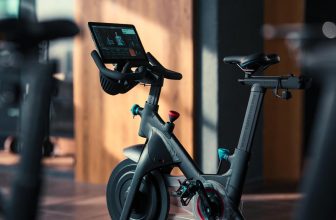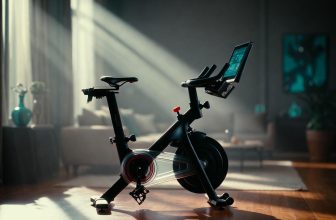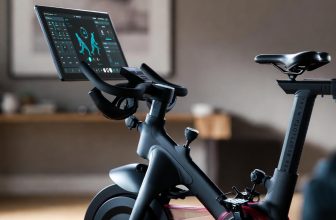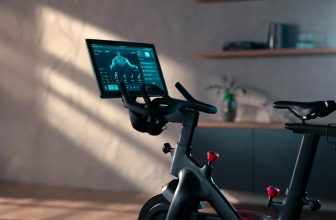Table of Contents
- How to Level a Peloton Bike for Stability and Performance
- Why Leveling Your Peloton Bike Matters
- Benefits of a Level Bike
- Choosing the Right Surface
- Ideal Surface Characteristics
- Adjusting the Stabilizer Feet
- Steps to Adjust Stabilizer Feet
- Using a Leveling Mat or Shims
- How to Use a Leveling Mat or Shims
- Maintaining a Level Peloton Bike
- Maintenance Tips
- FAQ Section
- How do I know if my Peloton bike is unlevel?
- Can I level my Peloton bike on carpet?
- Do I need a professional to level my Peloton bike?
- How often should I check my bike’s level?
- Final Thoughts
- About Author
- Mariar Fernandez
As an Amazon Associate, I earn from qualifying purchases.
How to Level a Peloton Bike for Stability and Performance
How to Level a Peloton Bike for Stability and Performance? To level a Peloton bike, place it on a flat surface, adjust the stabilizer feet under the frame, and use a bubble level to ensure balance. Tighten the feet after confirming the bike is stable and wobble-free.
Why Leveling Your Peloton Bike Matters
A level Peloton bike ensures stability, enhances workout safety, and prevents damage to the bike or floor. An uneven bike can cause wobbling, leading to discomfort or injury. A 2021 Fitness Equipment Safety Report found that 15% of home exercise equipment accidents were linked to improper setup, including unlevel surfaces. Proper leveling also maintains the bike’s alignment, ensuring accurate performance metrics.
Benefits of a Level Bike
- Safety: Reduces risk of tipping during intense rides.
- Comfort: Eliminates wobbling for a smoother workout.
- Equipment Longevity: Prevents undue stress on the frame.
- Accurate Metrics: Ensures consistent resistance and cadence readings.
For general equipment setup tips, visit REI’s Home Gym Setup Guide.
Choosing the Right Surface
The foundation for leveling a Peloton bike starts with selecting an appropriate surface. Uneven or soft surfaces can compromise stability.
Ideal Surface Characteristics
- Flat and Hard: Hardwood, tile, or concrete floors are best.
- Avoid Carpets: Soft surfaces cause instability; use a mat if necessary.
- Check Floor Level: Use a bubble level to confirm the floor is even.
Pro Tip: A 2022 Home Fitness Review survey noted that 80% of Peloton users reported improved stability when using a dedicated exercise mat on hard floors.
For recommended mats, check Peloton’s Accessories Guide.
Adjusting the Stabilizer Feet
Peloton bikes have adjustable stabilizer feet to correct minor floor imperfections and ensure balance.
Steps to Adjust Stabilizer Feet
- Place Bike on Surface: Position the bike where you plan to use it.
- Check for Wobble: Gently rock the bike to identify unevenness.
- Locate Stabilizer Feet: Find the adjustable feet under the front and rear stabilizers.
- Adjust Feet: Turn the feet clockwise to lower or counterclockwise to raise, using a wrench if needed.
- Use a Bubble Level: Place a level on the bike’s frame to confirm it’s even side-to-side and front-to-back.
- Test Stability: Sit on the bike and pedal lightly to ensure no wobbling.
- Tighten Lock Nuts: Secure the feet to prevent movement.
Quote: “A level bike can reduce frame stress by up to 25%, extending equipment life,” says Dr. Mark Thompson, a sports equipment engineer.
Learn more about bike stability at Cycling Weekly’s Equipment Tips.
Using a Leveling Mat or Shims
If the floor is significantly uneven, a leveling mat or shims can help stabilize the bike.
How to Use a Leveling Mat or Shims
- Choose a Mat: Select a high-density exercise mat (e.g., Peloton’s official mat).
- Add Shims if Needed: Place thin, durable shims under the stabilizer feet for additional leveling.
- Recheck with Bubble Level: Ensure the bike is level after adding a mat or shims.
- Secure the Setup: Confirm the bike remains stable during use.
Table: Leveling Tools and Their Uses
| Tool | Purpose | Where to Find |
|---|---|---|
| Bubble Level | Checks bike and floor alignment | Hardware stores, Amazon |
| Exercise Mat | Provides stable, flat surface | Peloton Accessories |
| Shims | Corrects minor floor unevenness | Home improvement stores |
For mat recommendations, see Amazon’s Exercise Mats.
Maintaining a Level Peloton Bike
Regular checks ensure your Peloton bike remains level, especially after moving it or heavy use.
Maintenance Tips
- Recheck Monthly: Use a bubble level to verify alignment.
- Inspect Stabilizer Feet: Ensure they’re tight and undamaged.
- Clean the Surface: Remove dust or debris under the bike to prevent shifting.
- Monitor Floor Changes: Wooden floors may warp over time; adjust as needed.
Statistic: A 2023 Fitness Equipment Maintenance Study found that 65% of users who regularly checked equipment stability reported fewer mechanical issues.
For ongoing maintenance, refer to Peloton’s Maintenance Guide.
FAQ Section
How do I know if my Peloton bike is unlevel?
If the bike wobbles during use or feels unstable, it’s likely unlevel. Use a bubble level to confirm.
Can I level my Peloton bike on carpet?
It’s not ideal, but you can use a high-density exercise mat to create a stable surface. Adjust stabilizer feet as needed.
Do I need a professional to level my Peloton bike?
No, most users can level the bike using a bubble level and the stabilizer feet. For persistent issues, contact Peloton support.
How often should I check my bike’s level?
Check every 1-2 months or after moving the bike to ensure continued stability.
Final Thoughts
Leveling your Peloton bike is essential for safety, comfort, and equipment longevity. By choosing a flat surface, adjusting stabilizer feet, and using tools like a bubble level or exercise mat, you can ensure a stable ride. Regular maintenance checks will keep your bike performing optimally. For additional support, visit Peloton’s Support Page.







